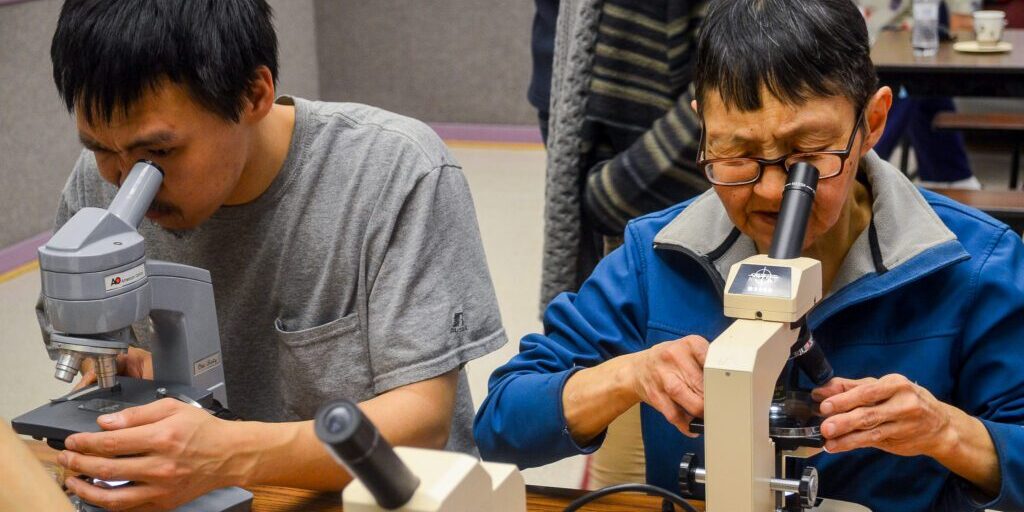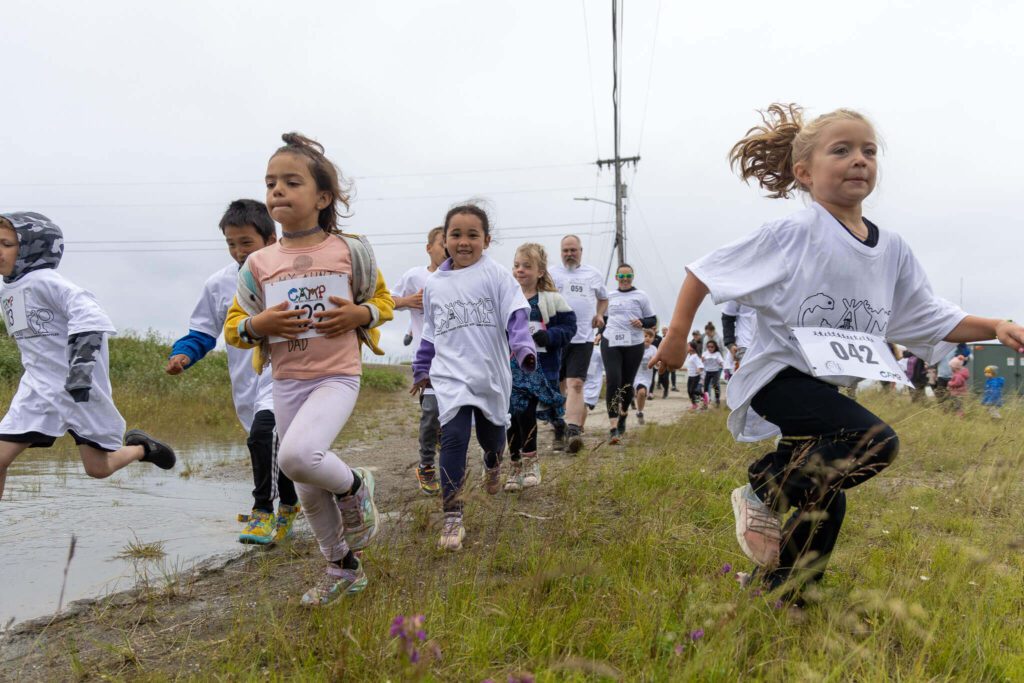NOME, Alaska — Between decommissioned defense sites and contaminated currents, the Bering Strait Region is particularly vulnerable to toxic pollution.
That’s why representatives from Alaska Community Action on Toxics (ACAT) were in Nome last week. The nonprofit works to educate the public on environmental health and advocate for communities affected by contamination. This visit focused on one of the biggest toxic impacts in the Bering Strait: cancer.
On St. Lawrence Island, there has been cancer crisis for decades, according to Vi Waghiyi, an ACAT program director originally from Savoonga.
“We have come to learn that our people have six to 10 times higher PCB levels in the blood than the average American in the Lower 48,” she said.
PCBs are cancer-causing chemicals that were banned in the U.S. in the 1970s. Waghiyi said they’ve lingered in the environment on St. Lawrence Island because two former air force bases at Gambell and Northeast Cape have never been decontaminated.
Waghiyi said the proof is there. ACAT has tested local food staples, everything from fish and berries to crab and greens.
“We found out that our main foods — bowhead whale, walrus, and seal, particularly the blubber and rendered oil — were so loaded with PCBs at levels we should not be eating,” she said.
And it’s not just PCBs from the former bases. Waghiyi said there are also high levels of pesticides and heavy metals, with contaminants coming from chemical-laden household products and air and water currents from around the world.
“We’re being exposed from so many sources,” she said. “It’s like a toxic stew.”
That has led to higher rates of cancer, miscarriages, and low birth weight for babies — not just on St. Lawrence Island, but in communities across the Bering Strait Region.
As part of continued efforts to help people learn about the toxics present in everyday life, ACAT brought Dr. Ted Schettler to Nome to visit the Norton Sound Regional Hospital and give a public talk.
“My latest project has been on breast cancer and the environment,” said Schettler, the science director of the nonprofit Science and Environmental Health Network.
Schettler’s research has found that many environmental factors play a role in breast cancer risk: diet and nutrition, physical activity, local emissions, and the chemicals people encounter daily.
“There’s no single thing we can point to that influences breast cancer risk nearly as strongly as cigarette smoking influences lung cancer risk,” he said. “Rather, there’s a collection of so-called risk factors that together create the conditions out of which breast cancer patterns evolve in our communities.”
But in educating the public on how to reduce environmental risk factors for cancer, Schettler and Waghiyi said they face difficult questions: Should people stop eating traditional foods to avoid contaminants? How can people stay healthy in their home communities without sacrificing their way of life?
Waghiyi said there’s no easy answer.
“It’s our identity. It’s our culture. We don’t have a choice,” she said. “So it’s important that we provide this data so that our people can make their own informed decisions.”
In the future, she said ACAT will continue raising awareness about toxics with the general public and health care providers as well as advocating for chemical cleanup. She said the organization will also continue collaborating with researchers like Schettler.







